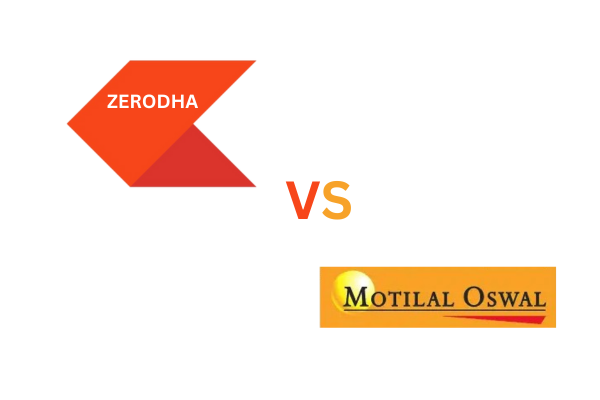The NASDAQ Index is one of the most recognized stock market indices globally, known for its focus on technology and innovation-driven companies. For Indian investors looking to diversify beyond domestic markets, understanding how the NASDAQ Index works can open up exciting investment opportunities. This index includes some of the world’s most influential brands like Apple, Amazon, and Microsoft, offering exposure to high-growth sectors. With various ways to invest from India—such as mutual funds, ETFs, or global investing platforms—accessing international markets has become easier than ever. This guide will help you navigate the process step by step, even as a beginner.
Table of Contents
What Is the NASDAQ Index?

The NASDAQ Index, officially known as the NASDAQ Composite Index, tracks the performance of more than 3,000 stocks listed on the NASDAQ stock exchange. It includes companies from various sectors, but is dominated by technology and innovation-driven businesses.
Some key highlights:
- Tech-focused: Over 50% of the index comprises technology companies.
- Global leaders: Includes Apple, Meta, NVIDIA, Alphabet, and more.
- Growth-oriented: Known for high growth potential and innovation.
Why Should Indian Investors Consider the NASDAQ Index?
1. Global Diversification

By investing in the NASDAQ Index, you spread your risk beyond the Indian market and gain exposure to global economic trends.
2. Tech Sector Exposure
The index is home to some of the most innovative companies in the world. These firms have shown strong long-term growth, and owning a slice of them offers excellent potential.
3. Hedge Against INR Depreciation

When you invest in the NASDAQ Index, your returns are in USD. If the Indian rupee weakens, your gains in INR may rise, offering a natural currency hedge.
4. Proven Long-Term Performance
Over the last decade, the NASDAQ Index has consistently outperformed many global benchmarks, including the S&P 500.
How to Invest in the NASDAQ Index from India
Now let’s look at practical ways Indian investors can invest in the NASDAQ Index:
1. Through International Mutual Funds
Several Indian mutual funds offer schemes that directly invest in the NASDAQ Index or U.S. equities.
Popular Options:
- Motilal Oswal NASDAQ 100 FOF
- Edelweiss US Technology Equity Fund
- Mirae Asset NYSE FANG+ ETF FOF
These funds are simple to invest in through any Indian broker or mutual fund platform.
Pros:
- Easy access
- INR-based investment
- SEBI-regulated
Cons:
- Slightly higher expense ratios
2. Using U.S. Stock Investment Platforms
Indian investors can use fintech platforms that allow direct investments in U.S. stocks and ETFs.
Trusted Platforms:
- INDmoney
- Vested
- Groww (U.S. investing)
- Stockal
You can buy U.S.-listed ETFs like:
- Invesco QQQ ETF (tracks NASDAQ-100)
- First Trust NASDAQ-100 Equal Weighted Index Fund (QQEW)
Pros:
- Direct access to U.S. ETFs
- Diversified options
- Transparent fees
Cons:
- Remittance limit under LRS ($250,000/year)
- Currency conversion charges apply
3. Via Indian ETFs Tracking NASDAQ Index
Some Indian asset management companies offer ETFs that mimic the performance of the NASDAQ Index.
Examples:
- Motilal Oswal NASDAQ 100 ETF
You can buy these ETFs just like stocks through your Demat account on NSE or BSE.
Pros:
- Lower expense ratio
- Listed on Indian exchanges
- Traded in INR
Cons:
- Lower liquidity compared to U.S. ETFs
Key Things to Consider Before Investing
1. Currency Risk
Returns are affected by the USD-INR exchange rate. A falling rupee benefits your returns, but a strengthening rupee might reduce them.
2. Market Timing
The NASDAQ Index is volatile and tech-heavy. Timing your entry with a long-term horizon in mind is crucial.
3. Regulatory Compliance
When using international platforms, make sure your investments fall under the Liberalised Remittance Scheme (LRS) guidelines of RBI.
Top Companies in the NASDAQ Index
Here are the top 10 weighted companies as of 2025:
| Company | Sector | Approx. Weight |
|---|---|---|
| Apple | Technology | ~12% |
| Microsoft | Technology | ~11% |
| Amazon | Consumer Discr. | ~6% |
| NVIDIA | Technology | ~6% |
| Alphabet (Google) | Technology | ~7% (combined) |
| Meta Platforms | Communication | ~4% |
| Tesla | Automotive | ~3% |
| Broadcom | Semiconductors | ~2% |
| PepsiCo | Consumer Goods | ~1.5% |
| Adobe | Software | ~1.5% |
Historical Performance of the NASDAQ Index
Over the past 10 years, the NASDAQ Index has delivered strong returns:
- 10-year CAGR: ~14%
- Best years: 2019 (+35%), 2020 (+43%)
- Worst years: 2022 (-33%) due to tech correction
In conclusion, investing in global markets can be a smart strategy for Indian investors seeking long-term growth and portfolio diversification. By gaining exposure to leading international companies, especially in the technology and innovation sectors, you can balance your overall investment approach. Understanding the risks, such as currency fluctuations and market volatility, is crucial before making any decisions. Whether you choose mutual funds, ETFs, or direct platforms, always align your investments with personal goals and risk tolerance. Exploring international opportunities like the NASDAQ Index can open doors to new possibilities and help you build a more resilient financial future.
Frequently Asked Questions (FAQs)
Q1: Is it legal to invest from India?
Yes, it is completely legal under RBI’s LRS. You can invest up to $250,000 per year in foreign assets.
Q2: Can I invest in the NASDAQ Index using a SIP?
Yes, SIPs are possible through international mutual funds that track the NASDAQ Index.
Q3: Are there any tax implications?
Yes. Gains from international funds or U.S. ETFs are taxed as per Indian capital gains laws. Also, U.S. dividends may be taxed at source (typically 25%).
Q4: Which trading site is best for beginners in 2025?
For beginners, Zerodha is one of the best trading sites in India due to its user-friendly interface, low brokerage fees, and educational tools. Other good options include Upstox, Angle one and Groww, which also offer easy account setup, intuitive mobile apps, and access to stocks, mutual funds, and ETFs.
Q5: Which market is best for beginners?
For beginners, the Indian stock market, especially through large-cap stocks listed on the NSE (National Stock Exchange), is a great starting point. It’s stable, well-regulated, and offers access to trusted companies. Mutual funds and index funds are also ideal for those seeking low-risk, long-term investment options with minimal effort.
Q6: Which trading is safe for beginners?
For beginners, long-term investing through mutual funds or index funds is the safest form of trading. Platforms like Zerodha Coin, Groww, or ET Money allow easy access. Avoid intraday or derivatives trading initially, as they involve higher risks. Focus on SIPs in diversified funds for steady, safe growth.





